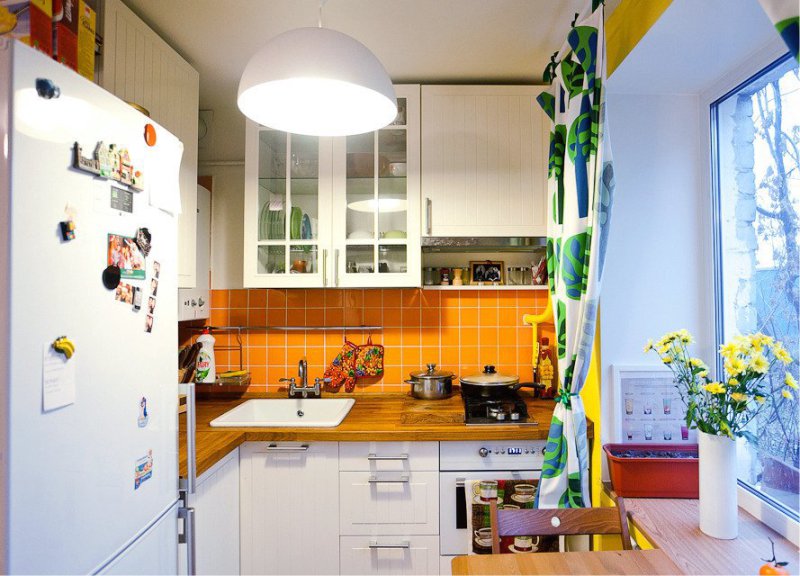The choice of grout is just as important as the choice of the tile itself. Its main task is to protect the base and the ends of the tile from the destructive effects of moisture, as well as from dirt, dust and chips. But there is another key function - the color perception of the interior depends on the color and texture of the seams and how easy it will be to clean the room. We tell how to choose the best grout for the tile and which manufacturer should give preference.
Top Tiled Grout
The most popular grout in 2018 and 2019 - from the manufacturers Ceresit (low-cost segment) and Mapei (slightly more expensive grout).
Other popular manufacturers of grout (by degree of popularity):
- Vetonit Deco;
- Litokol;
- Kiilto;
- Isomat.
For those who have not yet decided on the type and color of the grout, we suggest that you familiarize yourself with the 4-step guide.
Step 1. Select the type of grout
Grout come in 2 main types:
- Cement;
- Epoxy.
Which tile grout is better - epoxy or cement?
The best grout in all performance characteristics is epoxy. But because of the high price, its use is justified, perhaps, only for laying tiles in wet rooms (for example, in the bathroom, including a shower cabin), decorative mosaic panels, floor tiles in a room with increased traffic or heated floor, as well as complex design solutions. On the other hand, cement grout is an excellent workhorse that can serve for a long time in areas that are not too often in contact with water (for example, in the decoration of a kitchen apron) and if there are no special requirements for the color of joints, the presence of sparkles and other .
See also: How to choose a tile for the apron: 12 nuances and an overview of popular formats
Option 1. Cement grout
Cement grouting is a cement-based compound with added pigments, plasticizer, and other special additives.

Suitable for: seals of narrow and wide seams of floor tiles, on walls and kitchen apron, hallway, for porcelain stoneware (!), for repair with a limited budget, for the repair of summer cottages.
Not suitable for: walls and floors of bathrooms, as well as for glass tiles.
Available in: dry powder in a package (diluted independently with water before work) or in the form of the finished mixture in a plastic bucket. The use of ready-made mixtures is justified only if you are sure that you are consuming the entire volume at one time.

| pros | Minuses |
|---|---|
| Simple application. Cement grout does not freeze quickly, so they allow to slowly fix the flaws during the rubbing of joints. This is a big plus for beginners. | A less decorative look of seams, a small selection of shades. Compared with epoxy and silicone compounds. |
| Versatility. Suitable for sealing both wide seams (5-6 mm) and narrow (up to 5 mm). | Dries slowly. This is both a minus and a plus at the same time. |
| The most accessible type of grout. Perhaps this is the biggest advantage of cement grout. | Porosity. For this reason, the seams absorb a small amount of moisture, may mold and eventually begin to crumble and crack. |
| Habitual for all tilers material. Unlike epoxy grout, which does not work all masters. | Over time it gets dark by 1-2 tones. Also, the grout always darkens after treatment with protective impregnation. |
| Fits a little after drying. | |
| Less durable. | |
| Cement grout seams destroy acid-based cleaning products. Only use alkaline cleaners. |

Tips for choosing cement grout:
- To seal the seams on the floor and walls of the kitchen and bathroom, it is necessary to use grout with antiseptic properties;
- In order for cement grout to last longer, it must be further treated with protective impregnation (like Atlas-dolphin, Ceresit CT10, etc.) and it is desirable to do this at least 3 times;
- In Russia, the most popular cement grout is Ceresit CE40;
- For filling wide joints (more than 5 mm) use special cement grout with sand. Otherwise, the grout will quickly crack;
- If you mix cement fugue with latex additives, rather than with water, it will become more moisture resistant (you can wipe the tiles in the shower), durable and resistant to fading.
Option 2. Epoxy grout
Epoxy grout is a two-component mixture of hardener and pigmented epoxy resin. When mixed with each other, grout components will polymerize, making the filling of joints becoming super strong, waterproof, resistant to mechanical and chemical attack.
View this post on Instagram
Suitable for: wide joints (more than 5 mm), for finishing kitchen aprons (and other surfaces in the kitchen), for finishing tiled floors with heating, for finishing floors in rooms with high traffic, for finishing bathrooms, pools, showers.
Not suitable for: porcelain stoneware with a porous surface.
Available in: bicomponent mixture in a bucket.
| pros | Minuses |
|---|---|
| Strength. This is the main advantage of epoxy grout. | Fast setting (within 20 minutes) and a very viscous consistency. Epoxy grout joints need to quickly and deftly, that only experienced tile workers can do. It is especially difficult to wipe narrow seams. |
| Durability. The service life of seams can reach 50 years without discoloration. | High price. On average, 1 kg of epoxy grout costs about 1,200 rubles, which is several times higher than the price of cement fugue. |
| Neat look of the seams. This is especially true for the decoration of the apron, decorative panels and mosaics. | Grouting with epoxy should only be done by a qualified technician. Finding such a tiler is more difficult, and his services will be more expensive. Remember, one flaw and, most likely, the tile will be damaged forever. |
| Resistance to temperature extremes. This is especially good for tile floors in the kitchen. | |
| Environmental friendliness. For this reason, it is ideal for grouting apron in the kitchen (and other surfaces), as well as for underfloor heating. | |
| It is not subject to molding. | |
| Does not shrink or crack with time. | |
| It is easier to clean and less dirty. Resistant to aggressive cleaning chemicals. |
Step 2. Selecting the color of the grout
In the perception of the interior, the interwoven trowel mix plays no less a role than the tile. Here are two basic principles of how to choose a grout color.
Principle 1. Choice of grout to match tile
This technique is good if you want to focus on the color and texture of the tile. For example, if it is expensive and beautiful in itself.
- It is especially good to use tile and grout of one tone for finishing the floor - so it will look neat and monolithic.
- In fact, it is best to choose the color of the grout not the same tone as the tile, but one or two shades darker than it.
- The seams of mosaic tiles and tiles with a pattern are best rubbed with a fugue of the basic shade of the mosaic.
Here are some photo examples of such a decision.

Principle 2. The choice of contrast grout
Grinding in a contrasting color allows you to emphasize the geometry and interesting layout of the tile. This is a more courageous and non-standard reception, which can give both a very effective and unsuccessful result. If not guess with combination of shadesthen any defects in tiles and seams will become doubly noticeable. Here are a few win-win combinations: black + soft white or glossy white, beige + blue or turquoise, beige + chocolate / coffee, gray + mahogany.


Other important tips for choosing grout:
- The most versatile grout color for wall tiles is white. Especially well white seams are combined with colored tiles and black.
- But for the floor tile the universal shade of the fugue is light gray (the white on the floor darkens quickly and gets dirty).

- It is believed that the most practical grout - dark, for example, brown. Indeed, on dark seams dirt is less noticeable, but, on the other hand, they may seem dirty initially. By the way, dark grout is also more prone to fading and turbidity from aggressive cleaning products.

- Keep in mind that often light grout darkens when wet (for example, in the washing zone), and after drying they return to normal.
- The combination of light grout + light tile is ideal for small spaces, as it visually stretches the floor or walls. By the way, choosing a white grout for white tile is sure to compare their shades. Very often, white shades do not match, because of what tile and seams seem dirty or just not as beautiful as they could be.

- Protective impregnation makes cement grout 1-2 tones darker.
- Transparent grout with glitter can be used for mosaic panels as in the photo below or glowing in the dark.
Step 3.Calculate the consumption of grout
The consumption of grout depends mainly on the size of the tile, as well as the width and depth of the joints. The more tiles, the more fugues will have to buy. And vice versa. For example, for filling the seams of mosaic tiles will require much more trowel composition than the usual.
You can calculate the consumption of grout manually or on an online calculator (freely available on the web).
Here is the grout consumption formula:
Grout consumption (kg / m2) = (a + b) / (a * b) * c * d * e
Where:
- a is the tile length (mm),
- b - tile width (mm),
- c - tile thickness (mm),
- d is the seam width (mm)
- e is the grout density (kg / dm3), usually a figure from 1.5 to 1.8
Step 4. Go to the store
We have already presented a small rating of producers of smoothing compounds at the beginning of the article. It remains to give only the following tips before going to the store:
- Remember that any grout has a shelf life. Always check it before purchasing the composition and before laying.
- Buy grout preferably with a 15% margin.
- Before buying a fugue, make sure all selected packages are from the same batch. Otherwise, after laying the tile you will find a variety of seams, which can be very noticeable. A small difference in the shades of the same grout from different batches is a consequence of the peculiarities of production, and not marriage.
- How to join tile and laminate with or without a threshold - 5 solutions
- Gender is relative: choose flooring for the kitchen
- All about kitchen mosaic apron and more
- Apron from the tile "hog" in the interior of the kitchen - from the choice of design to the installation of their own hands
- How to choose baseboards for the floor - 50 photos and a guide to choose
- We mount a kitchen apron from a tile independently
- Everything about linoleum for the kitchen - compare, choose and lay your own hands







